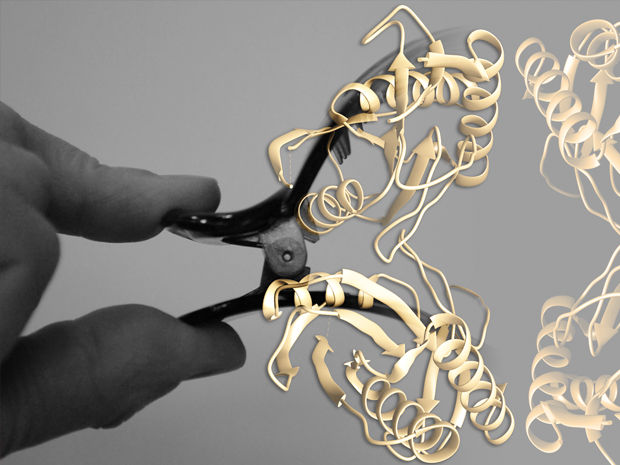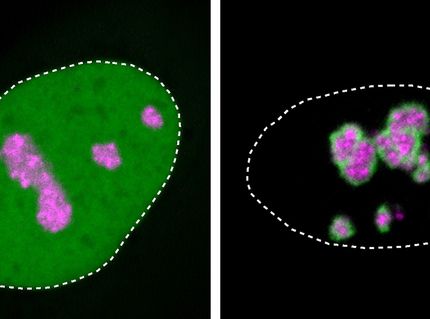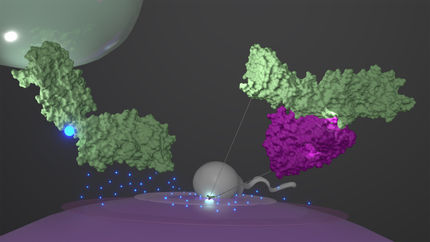“Hairclip” protein mechanism explained
New study describes, for the first time, a fundamental mechanism regulating a protein’s shape
Research led by the Teichmann group on the Wellcome Genome Campus has identified a fundamental mechanism for controlling protein function. Published in Science, the discovery has wide-ranging implications for biotechnology and medicine.

The shape of a protein determines its function, for example whether it is able to interact with another protein or with a drug. But a protein’s shape is not constant – it may change in response to different conditions, or simply as a matter of course. Understanding how this process works is key to figuring out how to manipulate proteins, for example in order to disrupt a disease. Today’s finding provides important clues that will help focus future research.
The team looked at a family of bacterial RNA-binding proteins that control a basic process in metabolism: one type of bacteria lives in very high temperatures, and the other likes things colder. The goal was to determine how a protein morphs from an active configuration (one that lets it bind to RNA) to an inactive one in two very different environments.
“The process is controlled by mutations, but these mutations aren’t in an obvious place, where the binding happens,” explains Sarah Teichmann, research group leader at the European Bioinformatics Institute (EMBL-EBI) and the Wellcome Trust Sanger Institute. “They’re actually working from a distance, indirectly, to change the shape of those sites. We wanted to know how that works at an atomic level.”
Undertaken initially as a purely computational study, lead author Tina Perica stepped away from her laptop and into the lab, where she worked with others to fill in the picture with experiments in biophysics, and integrated structural biology to detail how these mutations work.
“Any stable protein will have a lot of constraints on its mutational pathways,” says Tina. “These mutations have very few options – just like a person walking along a cliff will need to keep to a narrow path. But at the same time, proteins need enough wiggle room to be able to bind to things, like another protein or a drug. To find where the protein could provide that wiggle room, we retraced its steps millions of years into the past, and used a lot of different approaches to figure out what was happening.”
“If you know how a species of bacteria has evolved, you can reconstruct proteins that it may have had in the past, but which don’t exist today,” says Yasushi Kondo from MRC Laboratory of Molecular Biology. “We made a couple of these proteins, and used X-ray crystallography to solve their structures. That let us see details we would never have seen if we’d only studied proteins from the bacteria that live today. When we put that new information together with computational work and simulations, we started to see a clear picture of how these proteins change.”
“We were really pleased to do the elastic network modelling for this study, because it helps you see the dynamics of how the protein goes from one configuration to another,” says Nathalie Reuters of the University of Bergen, Norway. “It also shows that these fluctuations are the same for natural mutations between the thermophilic and mesophilic organism, for allosteric ligands, for small molecules binding, or for engineered mutations.”
“These proteins provide a very good example of a fundamental biophysical phenomenon that we think can happen in many proteins, regardless of which organism,” says Sarah. “We believe our findings will help future research into manipulating proteins, which has potential applications across the life sciences.”
Source article
Original publication
Perica, T., Kondo, Y, Tiwari, S.P., et al.; "Evolution of oligomeric state through allosteric pathways that mimic ligand binding."; Science 2014.
























































